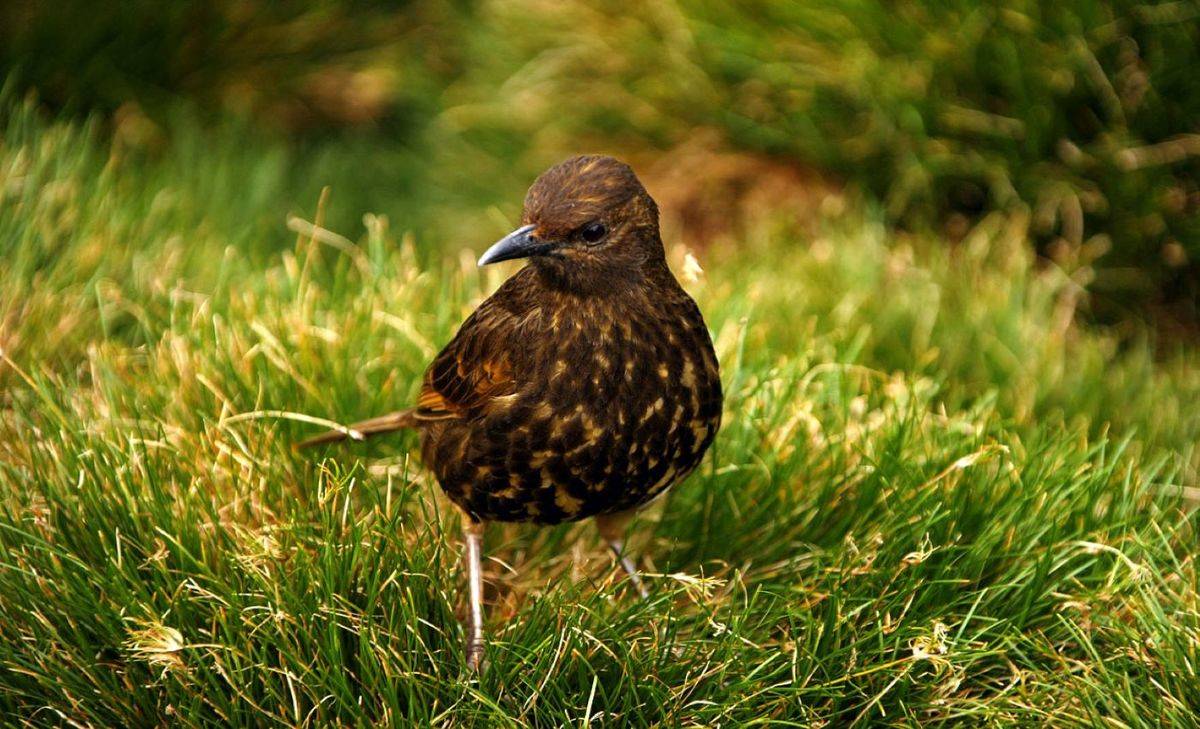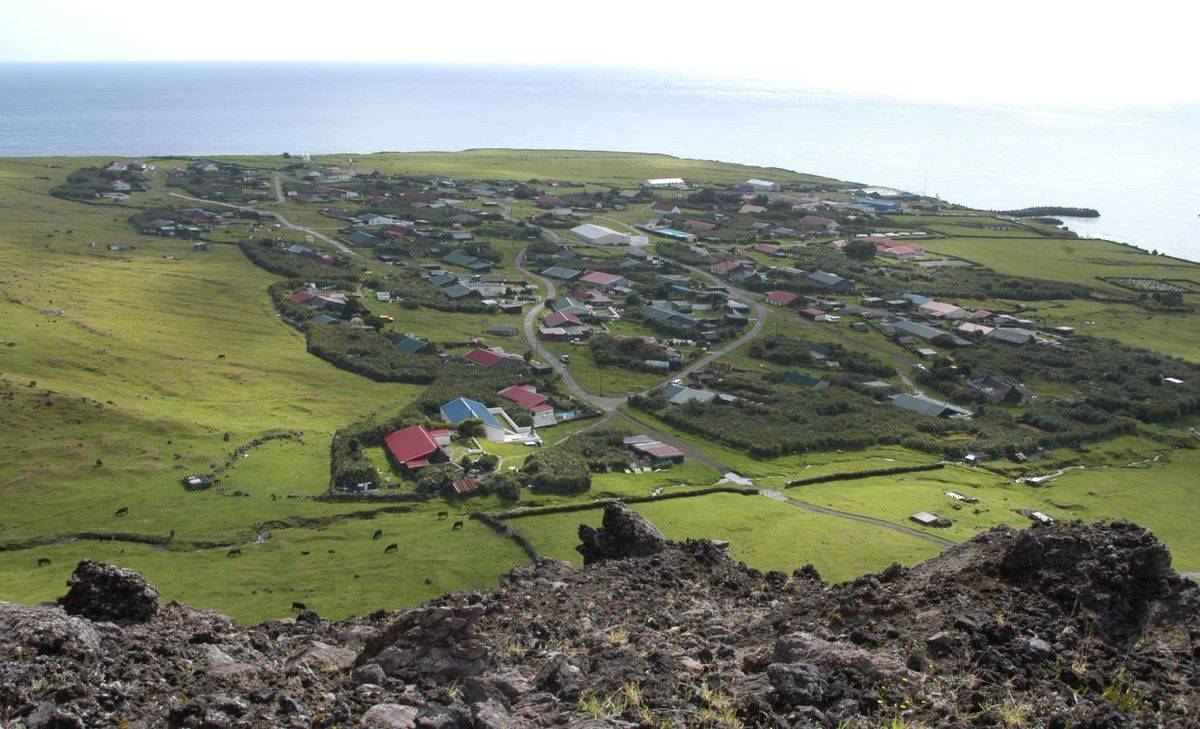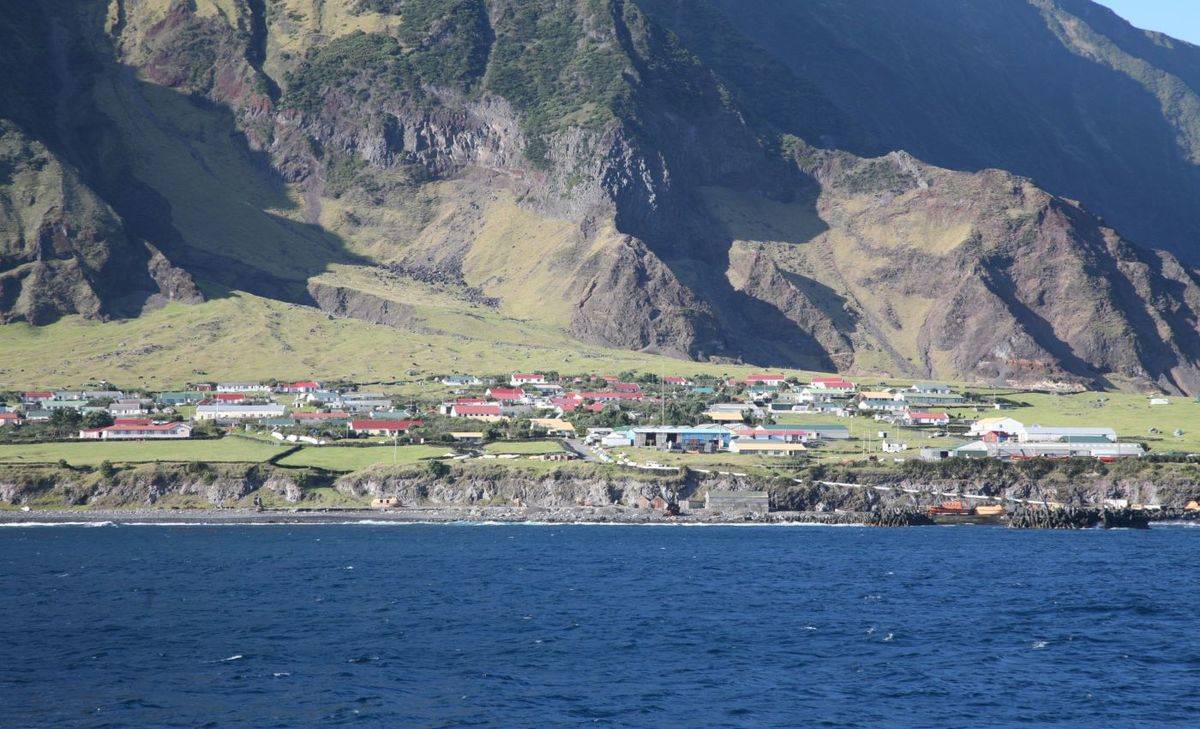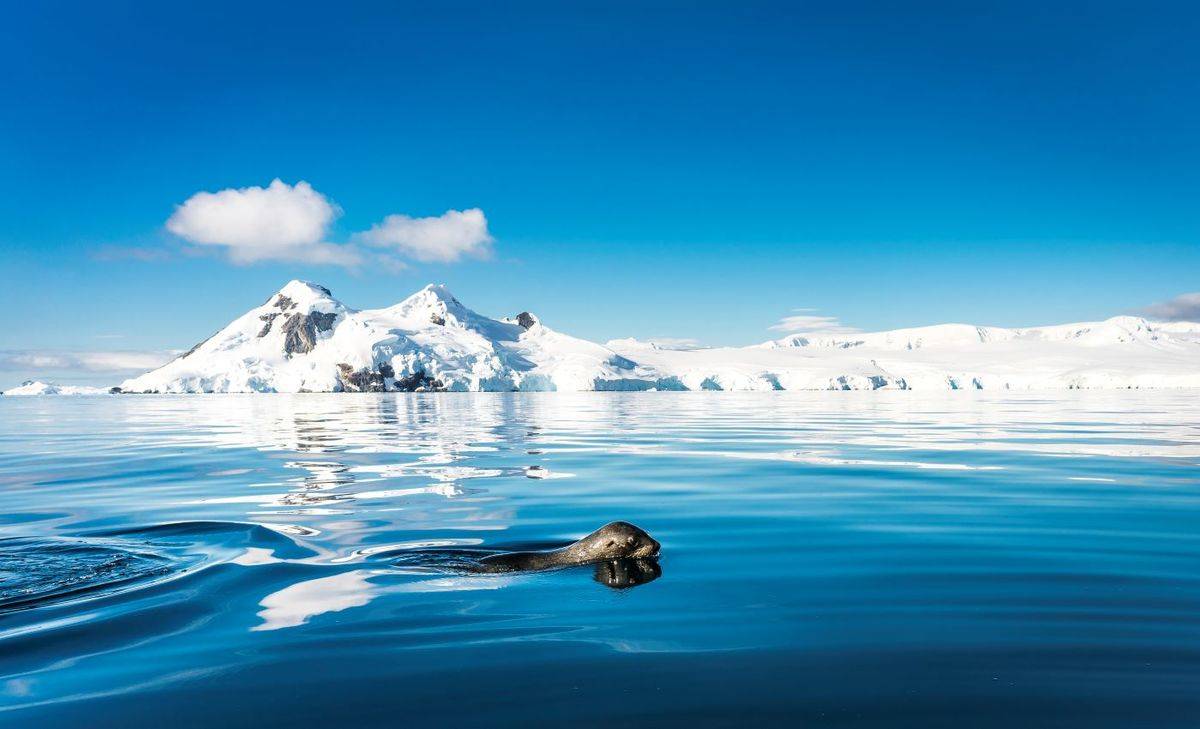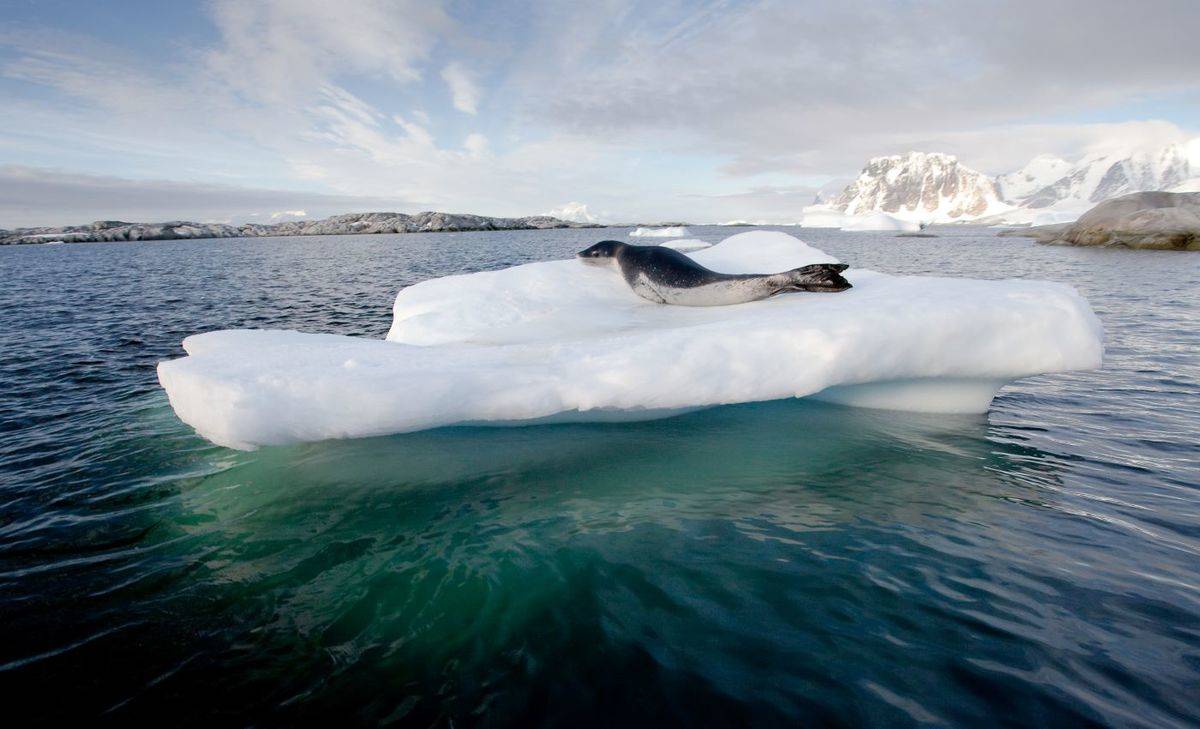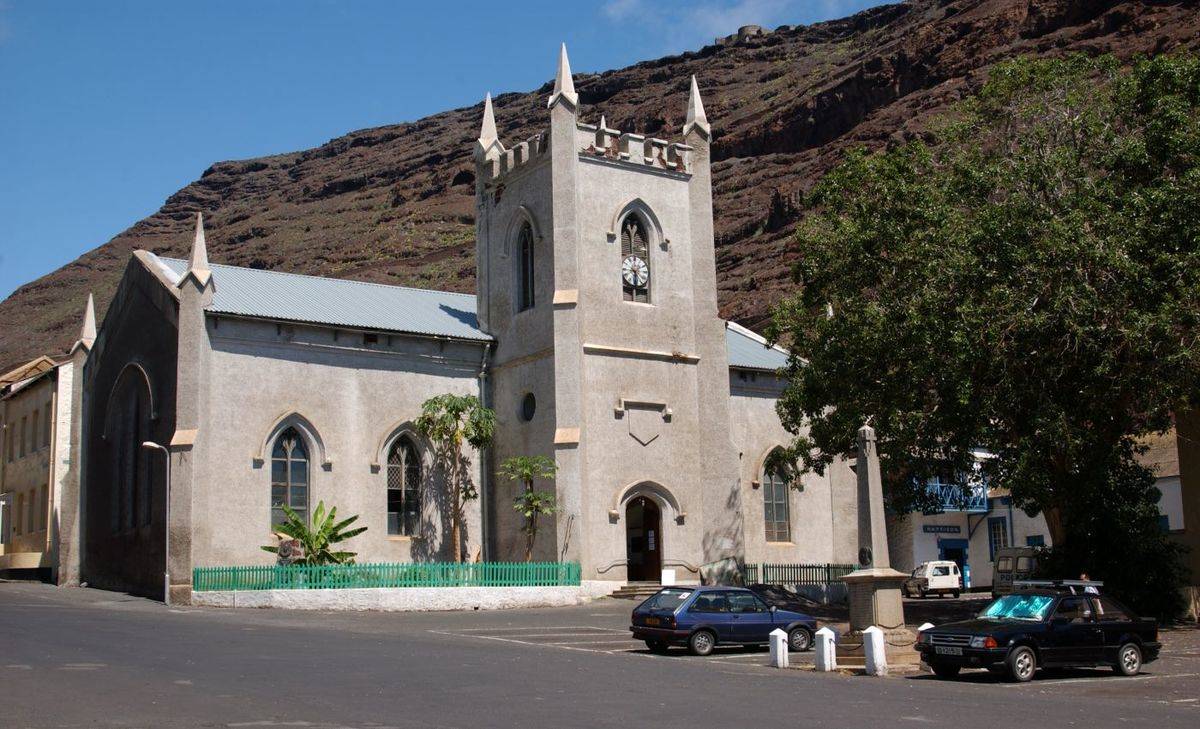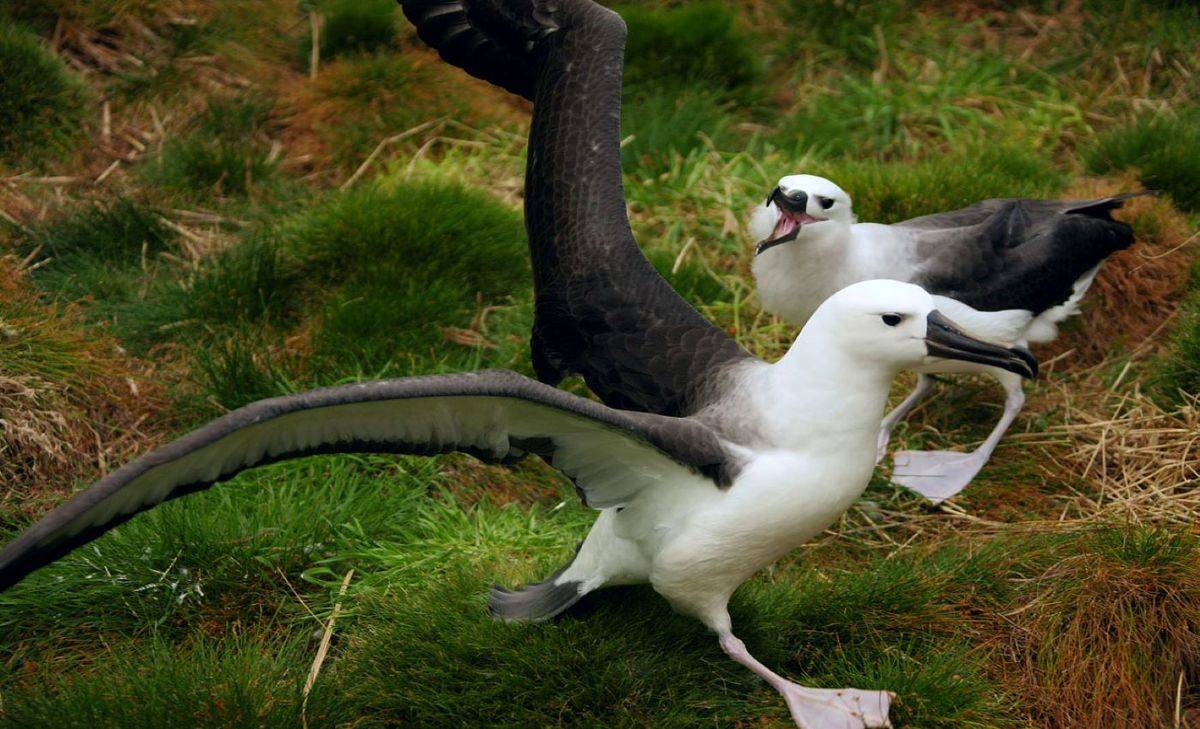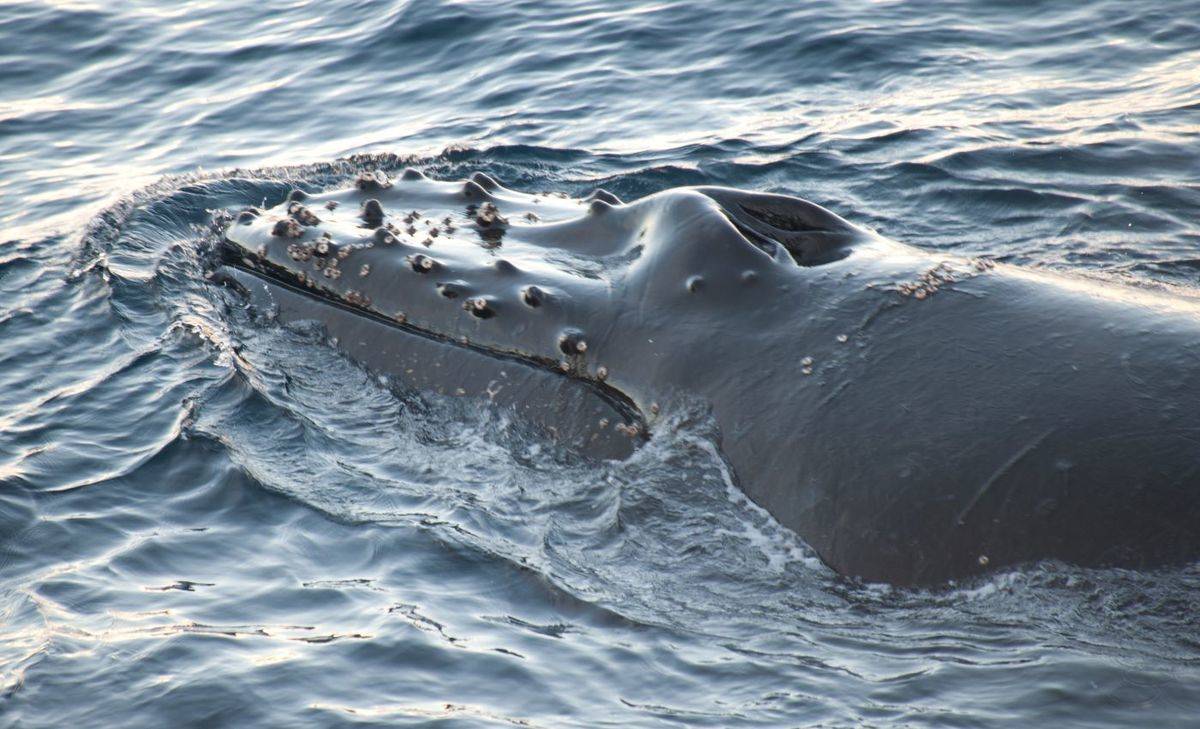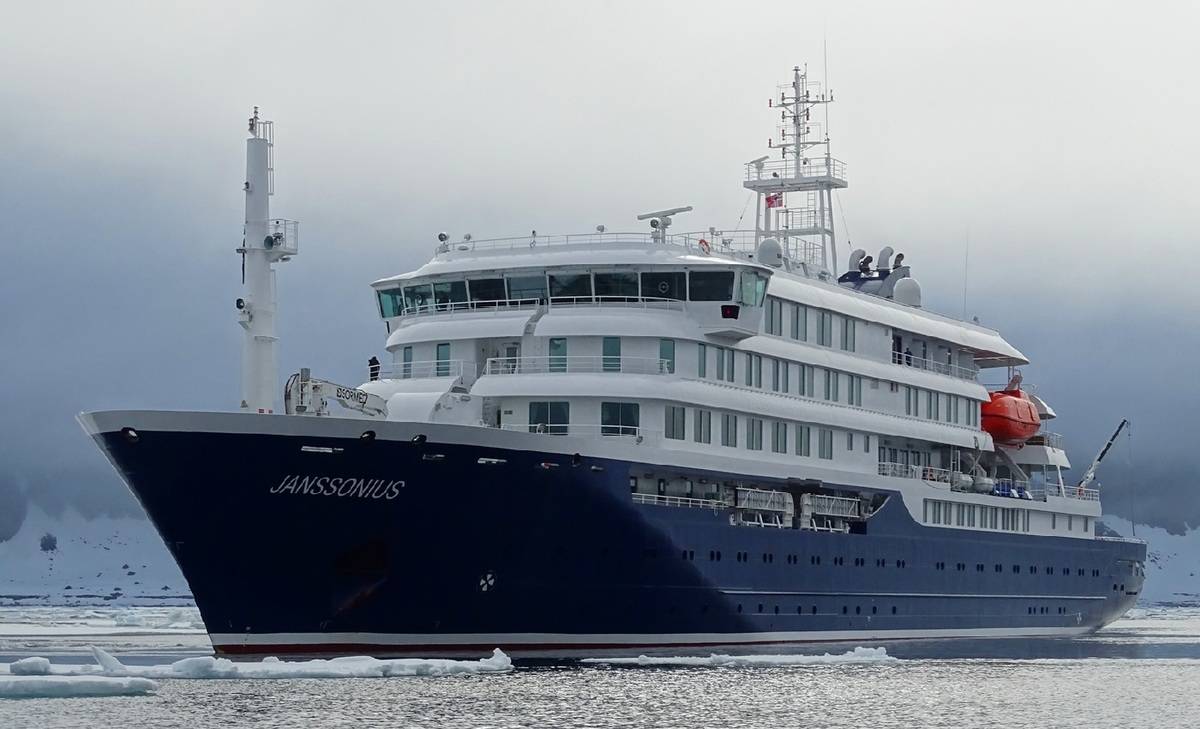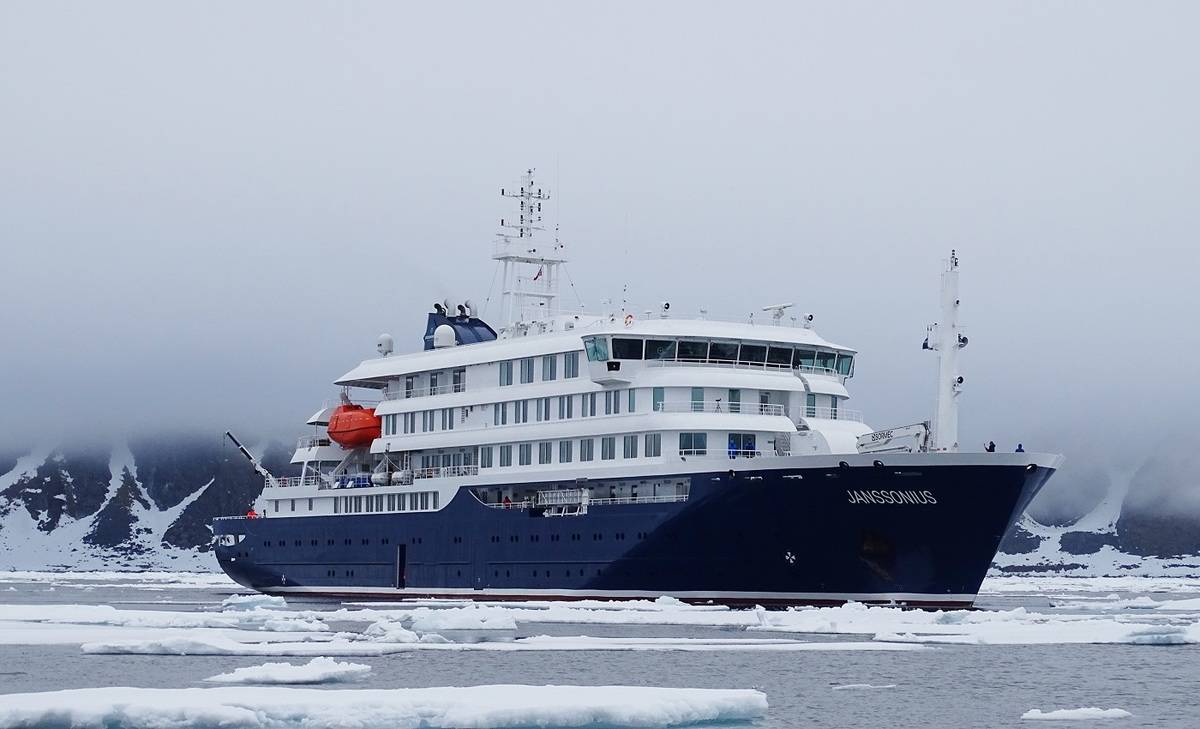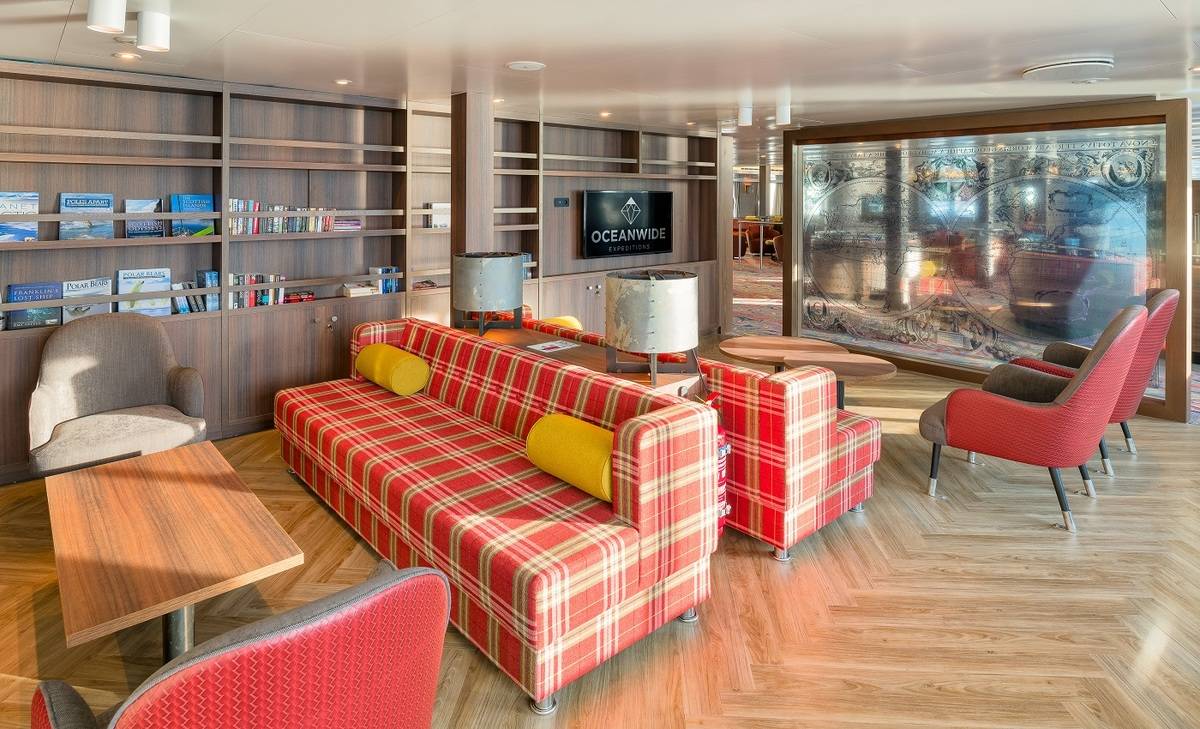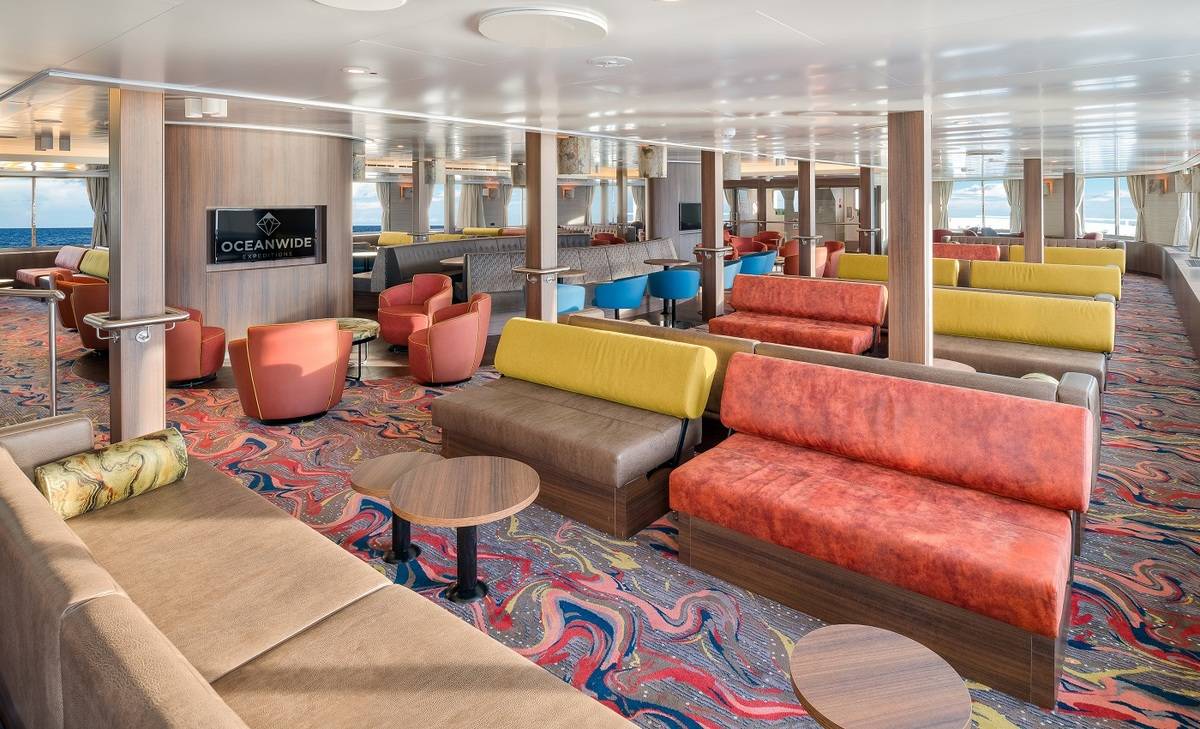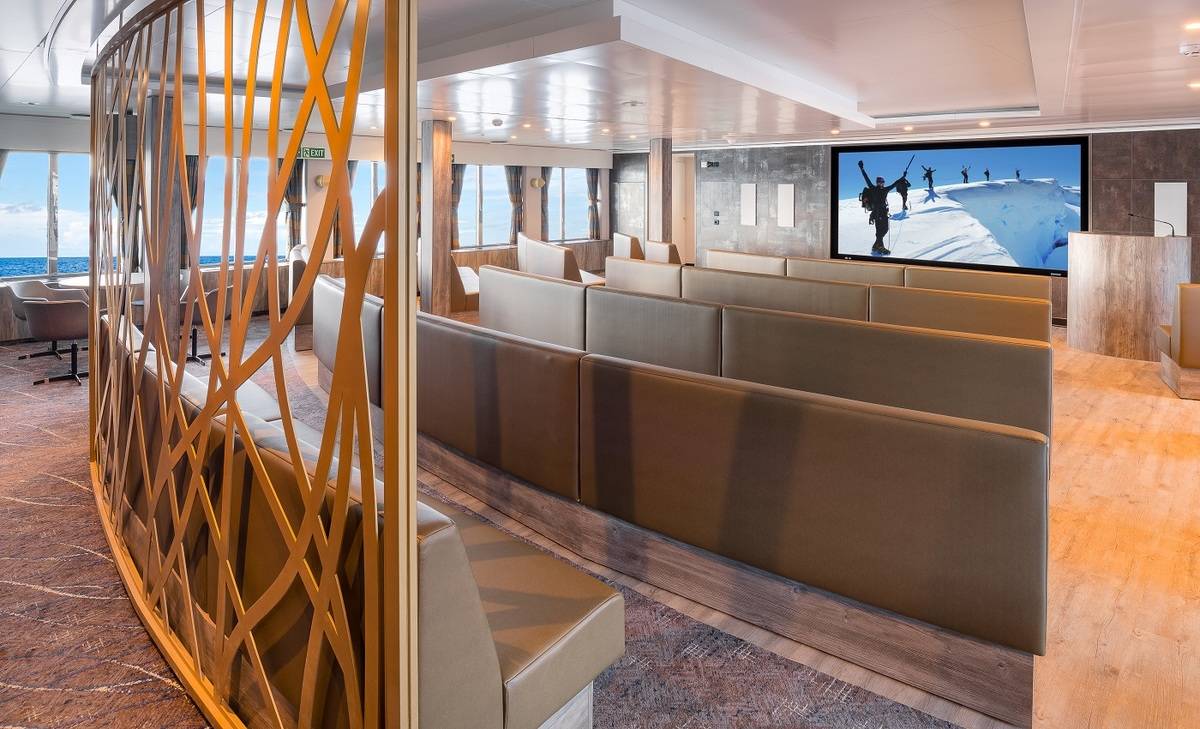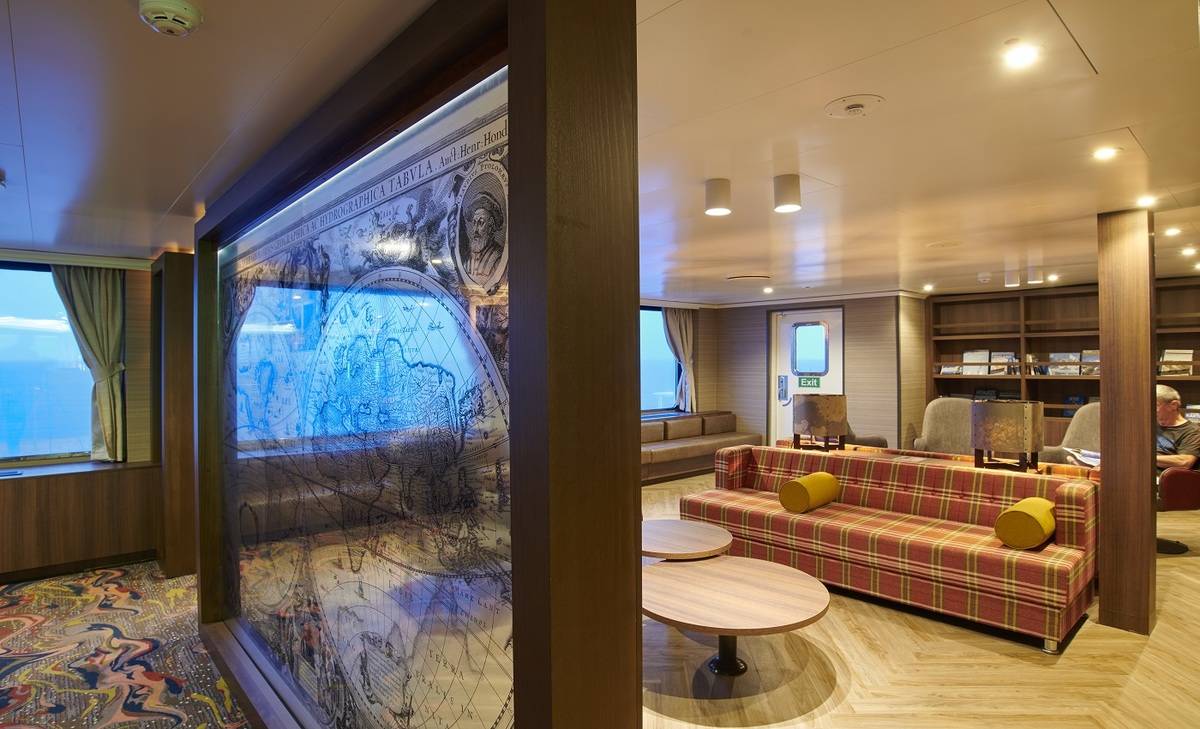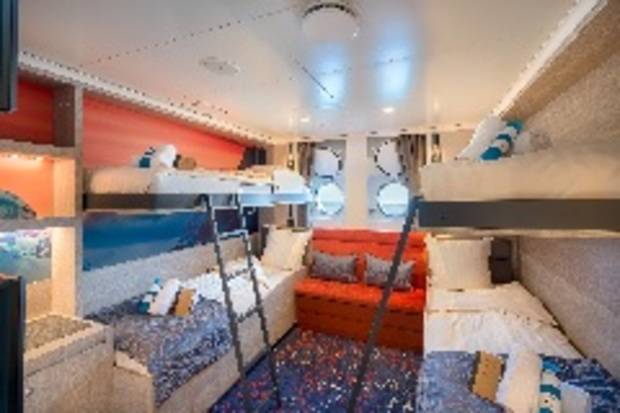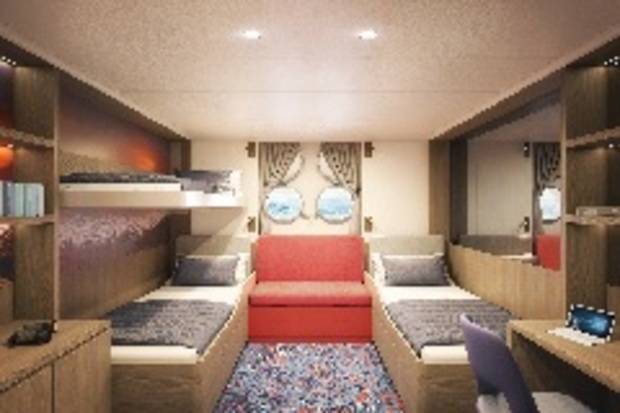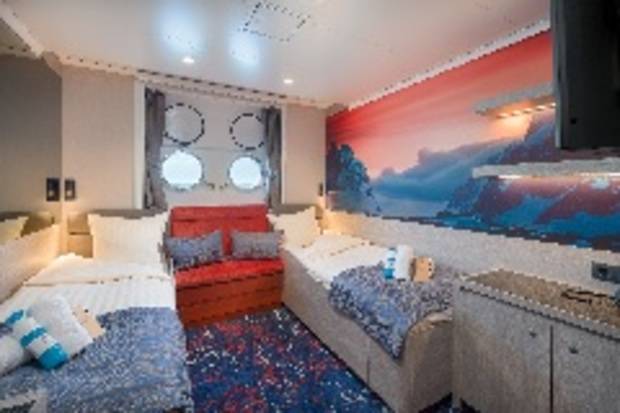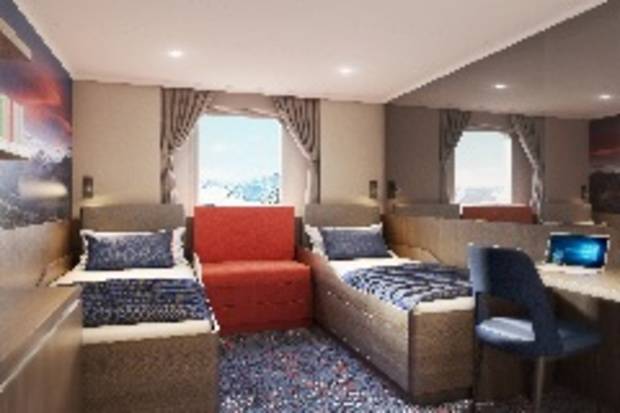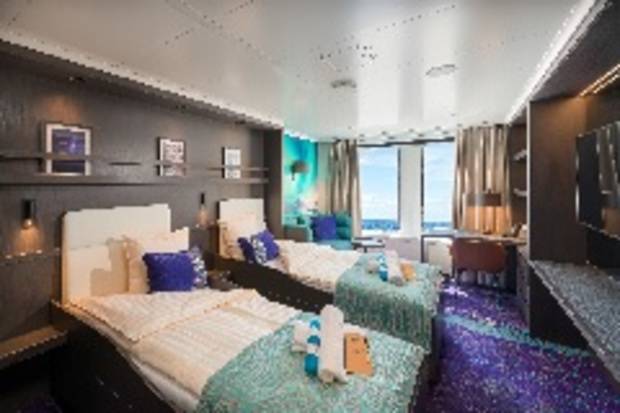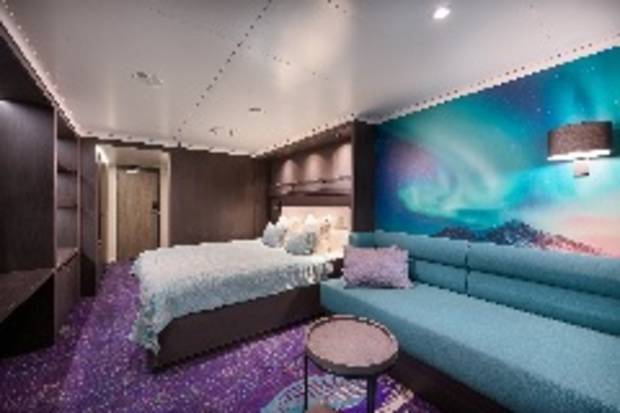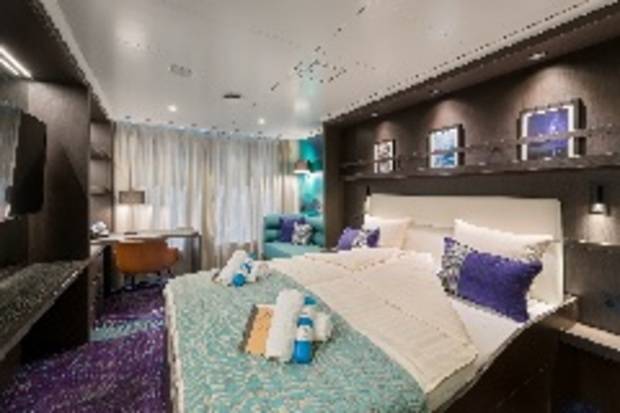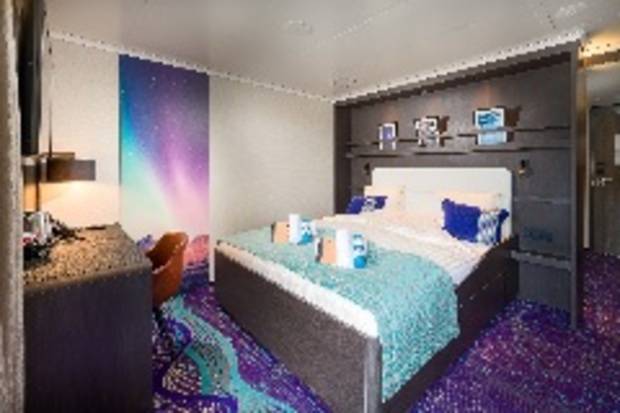Atlantic Odyssey including Antarctic Peninsula
32 Days - Janssonius
The Atlantic Odyssey is a bird-watcher’s delight as we cross paths with the migratory routes of species such as the Artic Tern & the Long-tailed Skua. We visit some of the most remote islands in the world while crossing the Atlantic and the Equator.
from USD $13250pp

Home » 32 Day M/V Janssonius: Atlantic Odyssey including Antarctic Peninsula
Itinerary Highlights
- Spot a variety of albatross and petrels along with Cape pigeons and southern fulmars when you sail the Drake Passage
- Step foot on the White Continent, Antarctica, a once in a lifetime opportunity
- Visit the massive king penguin colony in South Georgia along with limitless elephant seals and fur seal pups
- Explore an abandoned whaling station and stop by Shackleton's grave at Grytviken
Itinerary in Brief
- Day 1: Embark in Ushuaia
- Day 2-3: Path of the Polar Explorers
- Day 4-7: Enter the Antarctic
- Day 8-9: At Sea
- Day 10: Ushuaia & the Beagle Channel
- Day 11-13: Path of the Polar Explorers
- Day 14-16: South Georgia sights
- Day 17-20: Once more to the sea
- Day 21: Gough Island
- Day 22-25: Tristan da Cunha and all the pretty birds
- Day 26-29: Subtropical seas and seabirds
- Day 30-32: Highlights of Saint Helena
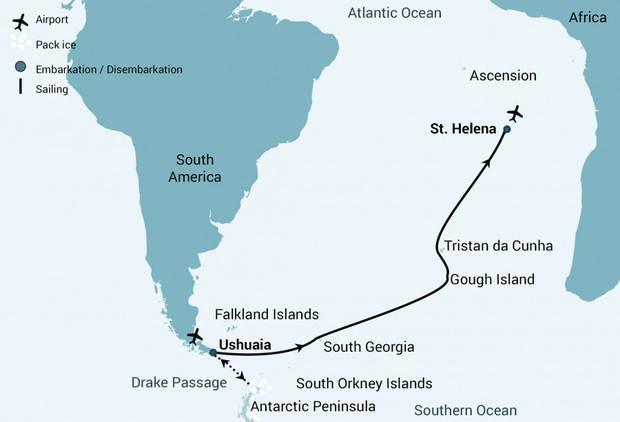
Day 1: Embark in Ushuaia
Your voyage begins where the world drops off: Ushuaia, Argentina, reputed to be the southernmost city on the planet, located on the far southern tip of South America. Starting in the afternoon, you embark from this small resort town on Tierra del Fuego – nicknamed “The End of the World” – and sail the scenic, mountain-fringed Beagle Channel for the rest of the evening.
Day 2-3: Path of the Polar Explorers
Over the next two days on the Drake Passage, you catch a taste of life from the perspective of the polar explorers who first braved these regions: cool salt breezes, rolling waves, maybe even a fin whale blasting up a column of sea spray. After passing the Antarctic Convergence – Antarctica’s natural boundary, formed when north-flowing cold waters collide with warmer sub-Antarctic seas – you are in the circum-Antarctic upwelling zone. Not only does the marine life change, the avian life changes too: A variety of albatrosses and petrels show up, along with Cape pigeons and southern fulmars. Then, near the South Shetlands Islands, the first icebergs flash into sight.
Day 4-7: Enter the Antarctic
Gray stone peaks sketched with snow, towers of broken blue-white ice, and dramatically different wildlife below and above. You first pass the snow-capped Melchior Islands and Schollaert Channel, sailing between Brabant and Anvers Islands.
Possible sites you may visit include:
Wilhelmina Bay – A likely spot to see feeding humpback whales. If conditions allow, you may even embark on a Zodiac cruise to the ghostly wreck of the Guvernøren, a whaling vessel that caught fire here in 1915.
Cuverville Island – Stabbing up between Rongé Island and the Antarctic Peninsula, Cuverville houses a colony of several thousand gentoo penguins as well as pairs of breeding brown skuas.
Danco Island – Activities here may focus on the gentoo penguins nesting on the island, in addition to the Weddell and crabeater seals that may be found nearby.
Neko Harbour – An epic landscape of mammoth glaciers and endless wind-carved snow, Neko Harbour offers opportunities for a Zodiac cruise and landing that afford the closest views of the surrounding alpine peaks.
Paradise Bay – You may be able to take a Zodiac cruise in these sprawling, ice-flecked waters, where you have a good chance of seeing humpback and minke whales. You have the chance to land on the Continent here too.
Booth, Pléneau & Petermann Islands – You may sail through the Lemaire Channel in search of Adélie penguins and blue-eyed shags. There’s also a good chance you’ll encounter leopard seals as well as humpback, minke, and fin whales here. You may also visit Booth Island’s Port Charcot.
Melchior Islands – A beautiful landscape rich with icebergs. Leopard seals, crabeater seals, and whales are found here, and there are excellent opportunities for kayaking and diving.
You depart at noon, depending on conditions on the Drake Passage.
Day 8-9: At Sea
While crossing the Drake, you’re again greeted by the vast array of seabirds remembered from the passage south. But they seem a little more familiar to you now, and you to them.
Day 10: Ushuaia & the Beagle Channel
New passengers join you in Ushuaia before you push back through the Beagle Channel.
Day 11-13: Path of the Polar Explorers
En-route to South Georgia. After passing the Antarctic Convergence – Antarctica’s natural boundary, formed when north-flowing cold waters collide with warmer sub-Antarctic seas – you are in the circum-Antarctic upwelling zone. Not only does the marine life change, the avian life changes too: A variety of albatrosses and petrels show up, along with Cape pigeons and southern fulmars.
Day 14-16: South Georgia Sights
Our aim today is to visit some of the world’s top king penguin rookeries. This time of year you have a good chance of seeing these animals nesting on eggs, with their chicks nearby. The rookeries are sometimes overflowing, with penguins traveling to and from the beach.
Possible visits in this region include:
Salisbury Plain, St. Andrews Bay, Gold Harbour – Here you can see not only the massive king penguin colony, but also elephant seals and limitless fur seal pups playing in the surf.
Prion Island – This is a great location to watch for wandering albatrosses.
Grytviken – We also have the opportunity to check out this abandoned whaling station, where king penguins walk the streets and elephant seals lie around like they own the place – because they basically do! You might also see the South Georgia Museum as well as Shackleton’s grave here.
Cooper Bay – This is a fine place for a Zodiac cruise, and this bay also houses a rookery of macaroni penguins. King penguins, pintails, and giant petrels may also appear here.
Moltke Harbour – Located in Royal Bay, this scenic spot gives you the chance to see the huge king penguin colony that lives here. This bay was also the site of the astronomical station where a German expedition using the vessel SMS Moltke observed the Venus transit in 1882.
Day 17-20: Once more to the sea
A pleasant tailwind often accompanies the vessel through the westerlies, and on both sides of the Antarctic Convergence, you might see large numbers of Antarctic and sub-Antarctic seabirds. If the conditions are right, you can also observe the stars changing position as we travel north.
Day 21: Gough Island
Today we plan to approach Gough Island for a Zodiac cruise in Quest Bay, if the weather permits. Here you might see northern rockhopper penguins and sub-Antarctic fur seals. In previous years, it has been possible for us to circumnavigate most of Gough Island’s 33-mile circumference, taking in this area’s splendid scenery and abundant wildlife.
Day 22-25: Tristan da Cunha
The remote islands of Tristan da Cunha are famed for their plentiful bird populations, which include rockhopper penguins, several species of albatross, petrels, skuas, terns, and many others. Our goal during this stage of our voyage is to visit the small settlement on the west side of the main island, but we might also land at Seal Bay on the south side of Tristan da Cunha or at Sandy Point on the east side.
In these stunning locations, you could encounter such exotic wildlife as yellow-nosed albatrosses and sub-Antarctic fur seals, all while exploring a rarely visited spot. We also intend to land at Nightingale Island and Inaccessible Island, both of which offer great views of beautiful seabirds ranging from yellow-nosed albatrosses to brown noddies.
Two days are reserved at Tristan da Cunha in case of bad weather, but please remember that nature determines our itineraries here: Since beginning the Atlantic Odyssey cruise in 1998, adverse weather led to the cancellation of 35% of Tristan da Cunha landings. If we have to divert for safety reasons, we will find good alternatives.
Day 26-29: Subtropical seas and seabirds
Seabirds and dolphins often follow our vessel in this area, where you may also be able to see how the constellations are changing again. As we sail, the northern constellations start to appear while the Magellanic Clouds sink low to the horizon.
Day 30-32: Highlights of Saint Helena
After we land at Jamestown on Saint Helena Island, you will have the opportunity to enjoy the area’s local culture, pleasant climate, and endemic bird life. You can pay a visit to Longwood House, where Napoleon died in exile; walk the 699-step Jacob’s Ladder, if you’re feeling ambitious; or snorkel the shallows offshore, seeing multitudes of tropical and subtropical fish. We also plan to visit the location where English astronomer Edmond Halley observed the southern sky, describing nearly 400 stars and their constellations during the 17th century.
Please note: You have the option to disembark and fly home from Jamestown, if flights are available. In the evening, we will depart for Ascension Island and Praia, Cape Verde, where you can also disembark. Please let us know what your preference is.
| Dates | Cabin | From | Special Offer |
|---|---|---|---|
| 20 Mar 2024 - 20 Apr 2024 | USD $13250pp | ||
| Quadruple Porthole | USD $13250pp | Contact us | |
| Triple Porthole | USD $15100pp | Contact us | |
| Twin Porthole | USD $16500pp | Contact us | |
| Twin Window | USD $17300pp | Contact us | |
| Twin Deluxe | USD $18450pp | Contact us | |
| Superior | USD $19700pp | Contact us | |
| Junior Suite | USD $20750pp | Contact us | |
| Grand Suite with Private Balcony | USD $24000pp | Contact us | |
**Prices are per person based on twin / shared accommodation.
**Single supplements may apply
Cabin Details
Quadruple Porthole
2 portholes, 2 upper & lower berths, small sofa, private shower & toilet, flatscreen TV, desk & chair, telephone and WiFi (supplemented), hair dryer, cabinet, wardrobe
Triple Porthole
2 portholes, 1 upper & 2 lower berths, small sofa, private shower & toilet, flatscreen TV, desk & chair, telephone and WiFi (supplemented), hair dryer, cabinet, wardrobe
Twin Porthole
2 portholes, 2 single beds, small sofa, private shower & toilet, flatscreen TV, desk & chair, telephone and WiFi (supplemented), hair dryer, cabinet, wardrobe
Twin Window
1 window, 2 single beds, small sofa, private shower & toilet, flatscreen TV, desk & chair, telephone and WiFi (supplemented), hair dryer, cabinet, wardrobe
Twin Deluxe
2 windows, 2 single beds, sofa, private shower & toilet, flatscreen TV, desk & chair, telephone and WiFi (supplemented), refrigerator, coffee and tea facilities, bathrobe, hair dryer, cabinet, wardrobe
Superior
2 windows, 1 double bed, sofa, private shower & toilet, flatscreen TV, desk & chair, telephone and WiFi (supplemented), refrigerator, coffee and tea facilities, bathrobe, hair dryer, cabinet, wardrobe
Junior Suite
1 double window, 1 double bed, sofa, private shower & toilet, flatscreen TV, desk & chair, telephone and WiFi (supplemented), refrigerator, coffee and tea facilities, bathrobe, hair dryer, cabinet, wardrobe
Grand Suite with Private Balcony
1 double window, 1 double bed, private balcony, sofa, private shower & toilet, flatscreen TV, desk & chair, telephone and WiFi (supplemented), refrigerator, coffee and tea facilities, bathrobe, hair dryer, cabinet, wardrobe
Janssonius Deckplan
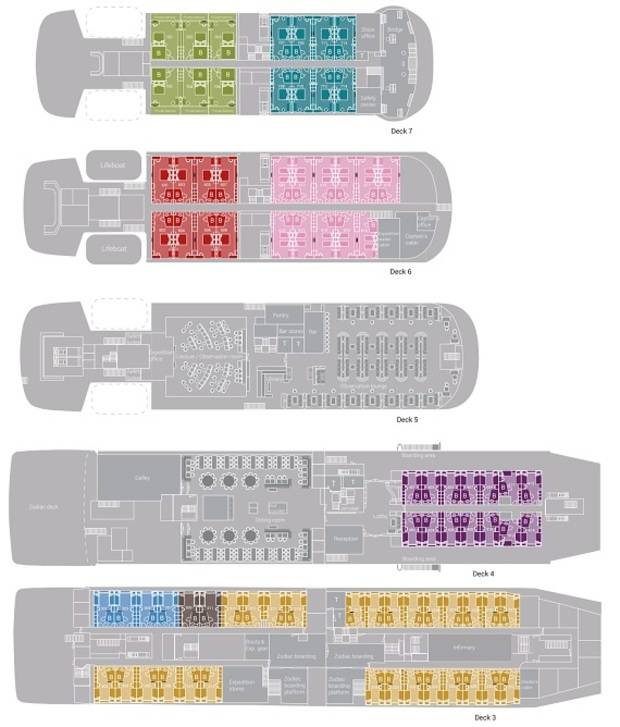
Specifications
- Passengers: 170
- Crew: 72
- Length: 107.6m
- Breadth: 17.6m
- Ice Class: Polar Class 6
- Speed: 15 knots
Whats included?
- Voyage aboard the indicated vessel as indicated in the itinerary
- All meals throughout the voyage aboard the ship including snacks, coffee and tea.
- All shore excursions and activities throughout the voyage by Zodiac.
- Program of lectures by noted naturalists and leadership by experienced expedition staff.
- Free use of rubber boots and snowshoes.
- Luggage transfer from pick-up point to the vessel on the day of embarkation, in Ushuaia.
- All miscellaneous service taxes and port charges throughout the programme.
- Comprehensive pre-departure material.
What’s not included?
- Any airfare, whether on scheduled or charter flights
- Pre- and post- land arrangements.
- Passport and visa expenses.
- Government arrival and departure taxes.
- Meals ashore.
- Baggage, cancellation and personal insurance (which is strongly recommended).
- Excess baggage charges and all items of a personal nature such as laundry, bar, beverage charges and telecommunication charges.
- The customary gratuity at the end of the voyages for stewards and other service personnel aboard (guidelines will be provided).
Notes
PLEASE NOTE: All itineraries are for guidance only. Programs may vary depending on ice, weather, and wildlife conditions. Landings are subject to site availabilities, permissions, and environmental concerns per IAATO regulations. Official sailing plans and landing slots are scheduled with IAATO prior to the start of the season, but the expedition leader determines the final plan. Flexibility is paramount for expedition cruises. The average cruising speed for our vessel is 10.5 knots.

